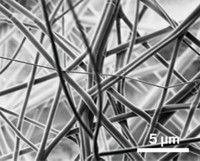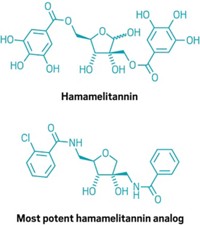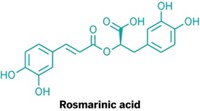Advertisement
Grab your lab coat. Let's get started
Welcome!
Welcome!
Create an account below to get 6 C&EN articles per month, receive newsletters and more - all free.
It seems this is your first time logging in online. Please enter the following information to continue.
As an ACS member you automatically get access to this site. All we need is few more details to create your reading experience.
Not you? Sign in with a different account.
Not you? Sign in with a different account.
ERROR 1
ERROR 1
ERROR 2
ERROR 2
ERROR 2
ERROR 2
ERROR 2
Password and Confirm password must match.
If you have an ACS member number, please enter it here so we can link this account to your membership. (optional)
ERROR 2
ACS values your privacy. By submitting your information, you are gaining access to C&EN and subscribing to our weekly newsletter. We use the information you provide to make your reading experience better, and we will never sell your data to third party members.
Biological Chemistry
Small molecules that block bacterial communication identified
Compounds found using a high-throughput assay based on bursting vesicles
by Bethany Halford
January 13, 2022
| A version of this story appeared in
Volume 100, Issue 2

When pathogenic bacteria like Staphylococcus aureus and Pseudomonas aeruginosa achieve a certain population density, they can communicate via quorum sensing—molecular signals that direct the microbes to act as a group. That communication can have deadly consequences. Researchers at the University of Wisconsin–Madison led by Helen E. Blackwell and David M. Lynn have now developed a method for detecting molecules that block quorum sensing (Cell Chem. Biol. 2021, DOI: 10.1016/j.chembiol.2021.12.005). The assay uses synthetic lipid vesicles—essentially little bubbles—that are loaded with the fluorescent dye calcein. Certain bacteria use quorum sensing to regulate the production of surfactants that can break the vesicles open and release their fluorescent payload. The researchers used the assay to screen a library of more than 25,000 small molecules and found two (shown) that were able to block quorum sensing in S. aureus. The scientists describe the compounds as the most potent small-molecule-derived quorum sensing inhibitors reported in this formidable pathogen. Blackwell says that it’s too early to consider the molecules for clinical use but that they could be employed to explore quorum sensing as a therapeutic target.





Join the conversation
Contact the reporter
Submit a Letter to the Editor for publication
Engage with us on Twitter